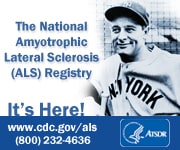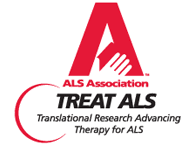
Being myopic on multi-level fundraising can cost the ALS cause a big advocacy opportunity. If an ALS walk simply meets its fundraising goal, is it a success?
One of the large ALS not-for-profits has walks that are its signature fundraising events. The walks literally keep many chapters in business. They have found a multi-level marketing formula that works to raise funds. Much like the bundlers of political campaigns or the purveyors of some soap products or expensive juices, the team captains build teams of donors who build teams of donors. A celebrated captain at the top of a pyramid can be responsible for very large accumulated donations without ever having written a personal check. People who work with or go to church with or go to school with people currently dealing with ALS are usually glad to jump on the pyramid.
Sure, the organizers add advocacy to the walks. Often chapters have advocacy tables at the walks where form letters to send to legislators are offered for walkers’ signatures. There are opportunities to pick up a brochure or sign up for a mailing list.
Should walks not be much more than meeting fundraising goals and signing form letters?
Walks are an excuse to talk about ALS in the media. Every time a person views “ALS” on a community calendar in a magazine or newspaper, that helps to build the reminder that Lou Gehrig’s Disease is still around and needs to be dealt with. Thousands of people see and hear those community calendars. On-air interviews and health segments are much easier to get when there is an upcoming event. Walks are reasons to knock on corporate doors not only for sponsorship checks but also to engage groups of employees in a disease that they may not be aware of. Businesses write generous checks to sponsor walks. It’s not all that hard to engage them a little more and ask them to put some walk t-shirts on their employees the day before a walk (and even better yet, to then send those employees to the event). Even if a business doesn’t have the budget to be a sponsor, it’s easy enough to ask them to advertise a walk in their internal communications. Bingo… more eyes see “ALS” and the impression is registered. Think of how many eyes can see handbills advertising “ALS” walks. You can’t walk into a medical school or a hospital every day to tack up signs about ALS, but you sure can get by with it when a walk is coming up. Healthcare professionals and tomorrow’s research scientists can get a subtle reminder of a disease that needs a cure. A yard sign on an advocate’s lawn reminds everyone who passes by that ALS is still around. A huge crowd at a walk makes a statement in a community and has an added benefit of being a media magnet.
Using walks to spread the word about the cause enhances advocacy and awareness and will build a base with roots (in addition to that top-down pyramid), and it can actually enhance the fundraising over the long haul. Ask the ladies in pink.
One of the large ALS not-for-profits has walks that are its signature fundraising events. The walks literally keep many chapters in business. They have found a multi-level marketing formula that works to raise funds. Much like the bundlers of political campaigns or the purveyors of some soap products or expensive juices, the team captains build teams of donors who build teams of donors. A celebrated captain at the top of a pyramid can be responsible for very large accumulated donations without ever having written a personal check. People who work with or go to church with or go to school with people currently dealing with ALS are usually glad to jump on the pyramid.
Sure, the organizers add advocacy to the walks. Often chapters have advocacy tables at the walks where form letters to send to legislators are offered for walkers’ signatures. There are opportunities to pick up a brochure or sign up for a mailing list.
Should walks not be much more than meeting fundraising goals and signing form letters?
Walks are an excuse to talk about ALS in the media. Every time a person views “ALS” on a community calendar in a magazine or newspaper, that helps to build the reminder that Lou Gehrig’s Disease is still around and needs to be dealt with. Thousands of people see and hear those community calendars. On-air interviews and health segments are much easier to get when there is an upcoming event. Walks are reasons to knock on corporate doors not only for sponsorship checks but also to engage groups of employees in a disease that they may not be aware of. Businesses write generous checks to sponsor walks. It’s not all that hard to engage them a little more and ask them to put some walk t-shirts on their employees the day before a walk (and even better yet, to then send those employees to the event). Even if a business doesn’t have the budget to be a sponsor, it’s easy enough to ask them to advertise a walk in their internal communications. Bingo… more eyes see “ALS” and the impression is registered. Think of how many eyes can see handbills advertising “ALS” walks. You can’t walk into a medical school or a hospital every day to tack up signs about ALS, but you sure can get by with it when a walk is coming up. Healthcare professionals and tomorrow’s research scientists can get a subtle reminder of a disease that needs a cure. A yard sign on an advocate’s lawn reminds everyone who passes by that ALS is still around. A huge crowd at a walk makes a statement in a community and has an added benefit of being a media magnet.
Using walks to spread the word about the cause enhances advocacy and awareness and will build a base with roots (in addition to that top-down pyramid), and it can actually enhance the fundraising over the long haul. Ask the ladies in pink.










1 comment:
This post makes a valid and often overlooked set of facts. It is true that the walks are now driven by a slick template that does result in a pyramid style revenue producing process.
My observation is that the pre-walk, walk and post-walk public relations are luke warm if they exist at all outside the ALS community.
If one is to use a corporate template to stimulate the fund raising aspects, it perplexes me why the same slick process is not used to raise awareness using the walks and other ALS centered events as the precipitant.
This muddled media outreach approach seems to start at the very top of national organizations like the ALS Association which holds an annual assemblage of people with ALS and their families in Washington that is accompanied by media silence. Frankly I am at a loss to explain this failure to combine awareness with major events.
Post a Comment